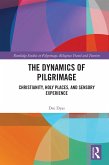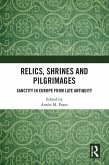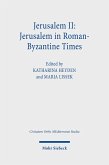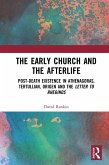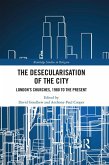This book offers a systematic, chronological analysis of the role played by the human senses in experiencing pilgrimage and sacred places, past and present.
Dieser Download kann aus rechtlichen Gründen nur mit Rechnungsadresse in A, B, BG, CY, CZ, D, DK, EW, E, FIN, F, GR, HR, H, IRL, I, LT, L, LR, M, NL, PL, P, R, S, SLO, SK ausgeliefert werden.
"This extraordinary book is bold, scholarly and informative. Drawing on encyclopaedic reading and a fascinating research project, it demonstrates the power and the significance of the senses in the ways that we respond to cathedrals and similar buildings. I cannot recommend it too highly."
-Grace Davie, Professor Emeritus of Sociology, University of Exeter, UK
"Dee Dyas' approach to the history of Christian sensory pilgrimage is bound to become a research and teaching staple for scholars of the Middle Ages. The study's breadth, from Jewish Temple periods through to the present day, offers a skilled negotiation of distance and proximity wherein Dyas invites readers to understand sacred sensory experience through an historical lens. Examples from medieval texts, art and architecture ground this work, offering a treasure trove for researchers who will appreciate Dyas' expertise in pilgrimage across the disciplines."
-Suzanne Yeager, Professor of English and Medieval Studies, Fordham University, USA
-Grace Davie, Professor Emeritus of Sociology, University of Exeter, UK
"Dee Dyas' approach to the history of Christian sensory pilgrimage is bound to become a research and teaching staple for scholars of the Middle Ages. The study's breadth, from Jewish Temple periods through to the present day, offers a skilled negotiation of distance and proximity wherein Dyas invites readers to understand sacred sensory experience through an historical lens. Examples from medieval texts, art and architecture ground this work, offering a treasure trove for researchers who will appreciate Dyas' expertise in pilgrimage across the disciplines."
-Suzanne Yeager, Professor of English and Medieval Studies, Fordham University, USA



